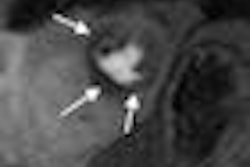An international group of scientists has taken the first step toward targeting radiation therapy dosage to individual patients based on their genetic characteristics.
Researchers announced the news at the European Cancer Organization (ECCO) and the European Society for Medical Oncology (ESMO) joint congress being held this week in Berlin.
Dr. Dirk de Ruysscher, a radiation oncologist at Maastricht University Medical Centre in the Netherlands, said his team's work might provide the basis for personalized radiotherapy in which a simple blood test may enable radiation oncologists to select the optimal radiation dose for a specific patient.
An international team of scientists from Belgium, Canada, Germany, and the Netherlands studied a group of patients with hypersensitivity to radiation therapy drawn from a database including more than 8,000 European patients. The database of the Genetic Pathways for the Prediction of the Effect of Irradiation (GENEPI) study, funded by the European Union, integrates biological material with patient data and treatment specifications.
The GENEPI project established a subdatabase in which very rare patient characteristics were brought together with the hypothesis that their genetic traits will enable the characterization of molecular pathways related to radiosensitivity. A tissue bank including skin fibroblasts, whole blood, lymphocytes, plasma, and lymphoblastic cell lines from patients known to be hypersensitive to radiation was established from patients in Canada and Europe.
When compared to a control group, 33 patients (10 men, 23 women) were identified as experiencing severe side effects occurring at very low radiation levels, severe side effects lasting more than four weeks, or severe late side effects occurring or persisting more than 90 days after treatment. Eleven of these patients ultimately were identified as being extremely hypersensitive to radiation.
These patients received radiation therapy using standard treatment protocols for breast cancer, head and neck cancers, lymphoma, and non-small cell lung cancer. They experienced acute skin reactions, extreme skin thickening or fibrosis, lung tissue inflammation, and blindness due to optical nerve damage.
De Ruysscher told conference attendees that he hoped the European Union would fund a successor project to elucidate genetic pathways in combination with other patient data so that predictive models can be developed and implemented into standard clinical practice. Using these models, radiation dose could be minimized to a tolerable level for hypersensitive patients and increased for patients with a higher tolerance to radiation exposure.
Related Reading
Lymphocyte apoptosis assay predicts late radiotherapy toxicity, September 23, 2003
Copyright © 2009 AuntMinnie.com


















